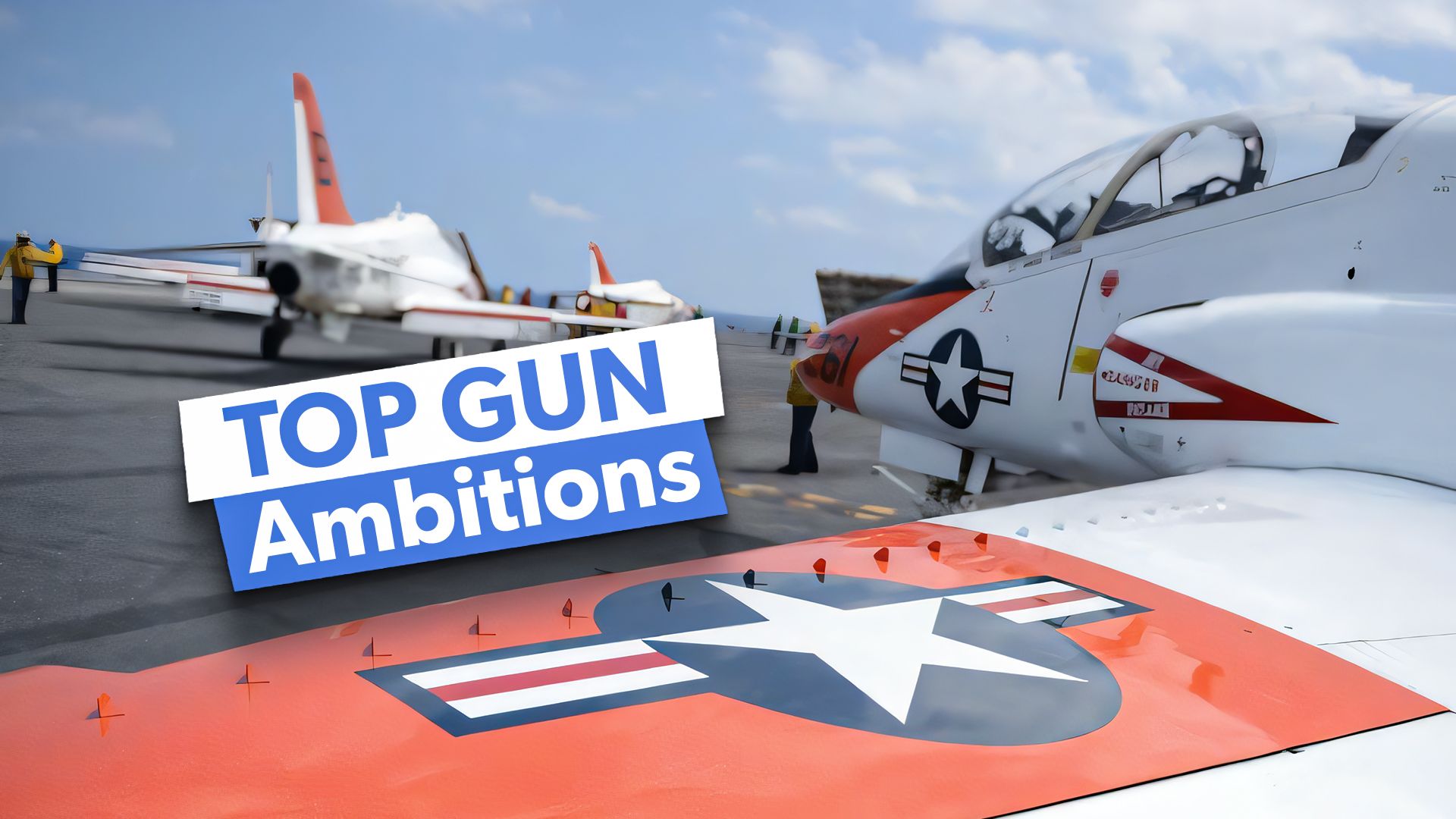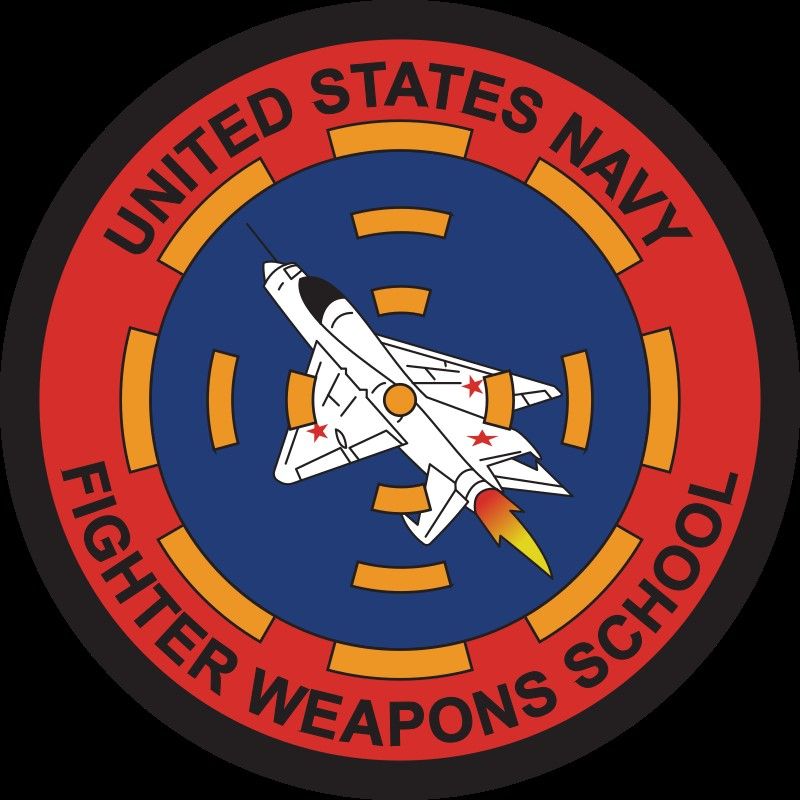Summary
- Becoming a US Navy pilot is no easy feat, starting with obtaining a bachelor’s degree & commission.
- After commissioning, pilots endure rigorous training at API before moving on to primary training.
- Selection to specific aircraft is based on the services’ needs, performance, and personal preference.
Although the Top Gun film franchise is obviously cinematic fiction, replete with Hollywood embellishments, the US Navy’s TOPGUN school, more officially the United States Navy Strike Fighter Tactics Instructor program (SFTI; previously known as US Navy Fighter Weapons School) is very real, and very intense.
Although the Top Gun film series is spelled out as two separate words, the real TOPGUN school is typically stylized in official written documents as a single word in ALL-CAPS.
But only the best of the best Naval Aviators get sent to TOPGUN, so long before you can get that prestigious training school, you have to become a Navy pilot in the first place, which is no easy task in and of itself. So, just how difficult is it to become a Navy pilot? Simple Flying now tackles that question.
First things first AKA “Getting there is half the fun”
Now, before you can even become a Navy pilot, you have to (1) earn a bachelor’s degree, and then (2) earn an officer’s commission in the USN. According to the official website of the Commander, Navy Region Southeast (CNRSE):
Both the Academy and NROTC enable you to earn your 4-year bachelor’s degree and train for your commission concurrently, whilst OCS is for those who’ve already earned their undergraduate degree and then decided that they want to earn those prestigious wings of gold; it is a particularly attractive option for prior enlisted sailors who earned their degree whilst serving on active duty and have ambitions of transitioning into the commissioned ranks. (The enlisted troops who successfully complete that transition are nicknamed “mustangs.”)
On a personal note, back in 1998, I applied for Navy OCS; I scored high enough on the Officer Aptitude Rating (OAR) exam to qualify for the program but not high enough to qualify for Naval Aviator (Pilot) or Naval Flight Officer (NFO, i.e., Navigator). I eventually ended up in the Air Force, whereupon I learned I wouldn’t be allowed to fly anyway due to my depth perception deficiency (stereopsis), so long story short, I became a Security Forces (HOOAH!) troop instead.
Next step: API
Okay, so you’ve earned your commission; Bravo Zulu, HOOYAH, and salute to you, sir/ma’am. Great, now what?
Next step, per CNRSE:
“Navy, Marine Corps, Air Force and Coast Guard flight students spend about six weeks in Aviation Preflight Indoctrination (API) at the Naval Aviation Schools Command. There they are challenged both academically and physically. Classes include: engineering, aerodynamics, air navigation, aviation physiology, and water survival.”
Aaahhh yes, good ol’ water survival training. For those of you who remember Taylor Hackford’s 1982 movie An Officer And a Gentleman starring Richard Gere and the late great Louis Gossett Jr. (May 27, 1936 – March 29, 2024; won the Best Supporting Actor Oscar for his portrayal of USMC Gunnery Sergeant Emil Foley), that undoubtedly conjures up memories of the “dunker” scene:
Snagging the SNA slot
Congratulations, Ensign/2nd Lieutenant John/Jane Doe, you’ve survived the rigors of API, including the trials & tribulations of water survival training (and hopefully didn’t end up needing mouth-to-mouth resuscitation along the way). Now what? We turn to CNRSE for the answer once again:
“Upon completion of API, student pilots, also known as Student Naval Aviators (SNA), and student navigators, known as Student Naval Flight Officers (SNFO), proceed to their separate primary training pipelines. Primary SNA training is conducted at three bases: NAS Whiting Field, Milton, FL; NAS Corpus Christi, TX; and Vance Air Force Base (AFB), Enid, OK.
“For the SNAs reporting to Navy bases, primary training is approximately 22 weeks. It includes ground-based academics, simulators and flight training in the T-6A Texan II. Primary training consists of six stages: Familiarization (FAM), Basic Instruments, Precision Aerobatics, Formation, Night FAM, and Radio Instruments.”
Pipeline selection, i.e., the aircraft type you’re going to end up in, occurs at the end of primary training. The selection criteria, in descending order of importance, are (1) the current and projected needs of the services, (2) the student’s performance, and (3) the student’s personal preferences (the so-called “dream sheet”). SNAs can go one of four routes from there:
- Maritime (multi-engine prop)
- E-2/C-2, Rotary (helicopters)
- Strike (jets)
- E-6 TACAMO.
Striking (fighter pilot wings of) gold
“I don’t know, but I’ve been told
Navy wings are made of gold”
–USN marching & running cadence
Alright-alright-alright, Dilly-dilly, Giggity-giggity, Gooby-galloo, and Hooyah, you’ve now made it to the final step:
“SNAs who enter the Jet/Strike pipeline complete their training at either NAS Kingsville or at NAS Meridian in the T-45 Goshawk. During Strike training, pilots learn strike tactics, weapons delivery, air combat maneuvering, and receive their carrier landing qualification. After receiving their Wings of Gold, Strike pilots report to an F/A-18, E/A-18 or F-35B/C FRS, and eventually report to their first Fleet squadron.”
For a bit more in the way of specifics, we turn to the website of Training Wing One, NAS Meridian:
“The T-45 Strike Flight Curriculum is comprised of 21 stages split between an Intermediate phase and Advanced phase. During these 21 stages students will fly approximately 160 hours in the T-45C aircraft of which nearly 40 hours are solo. Students will also fly approximately 96 hours in aircraft simulators before they complete the syllabus…The first eight stages of training are designed to introduce the student naval aviator to jet aircraft and provide a basis for future stages. They include, Instrument training, Jet Familiarization flights, Formation flights, Night Familiarization flights, and Land Based Carrier Qualifications.”
“The later stages of training introduce the student to the strike community with Operational Navigation in which the students learn to plan and fly low level flight routes. They also fly Weapons and Air Combat Maneuvers which introduce the student to different offensive weapons and tactics. In weapons stage, the students drop 25 lb. practice bombs at a target range near Meridian and Air Combat Maneuvers with other aircraft. These stages prepare the students for the tactical jets that they will be flying when they leave Meridian for the U.S. Navy fleet…
“The syllabus culminates in the Carrier Qualification Stage when the students fly aboard a fleet aircraft carrier to complete their Carrier Qualification and make their first arrested landings. Every student must carrier qualify by completing four touch and go and ten arrested landings aboard an aircraft carrier before they earn their Wings of Gold”
No sweat, right? Easy money. (Sarcasm mode fully engaged here.)



